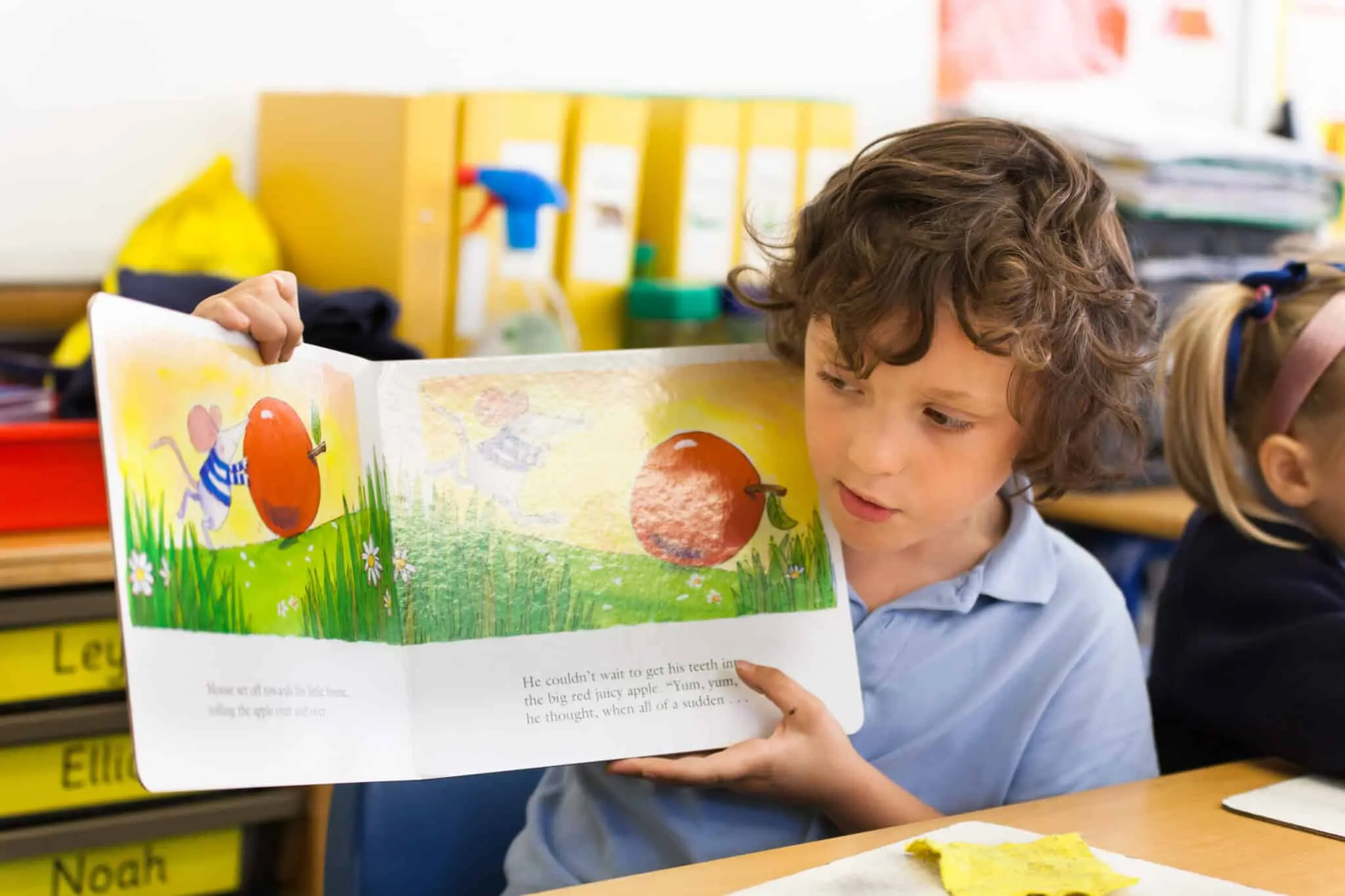November 4, 2013
In the first in a series of Frequently Asked Questions, we’re looking at one of the most common causes for enquiries from customers: book levels. How can it be that a chunky 300-page novel has the same book level as a picture book? Managing Editor Cecelia Powell explains why these apparent anomalies are actually demonstrations of the accuracy of the ATOS formula.
From time to time we hear from teachers and librarians who are concerned that their book labels are incorrect, finding big books alongside picture books on their shelves and vice versa because their book levels seem unusually low or high for a book of that size. This occurs because the book level is determined by the ATOS formula, which is a measure of text complexity and is not affected by the length of a book. Some examples of commonly cited books illustrate how this occurs.
Little books with high book levels

Mr Greedy, the second book in Roger Hargreaves’ Mr Men series, has a book level of 4.4. By way of comparison, this is the same level as two of Malorie Blackman’s Noughts and Crosses books (and greater than the other two). It may seem strange to find these books sitting side by side sharing a book level, but a closer look at the text reveals a similar complexity of vocabulary and sentence length.
Part of the charm of the Mr Men books is Roger Hargreaves’ creative use of slightly unusual words and his habit of stringing them together in long sentences. For these reasons, Mr Greedy is found to be more complex than an average picture book, as this passage shows:
Over on the other side of the table stood the source of that delicious smell. A huge enormous gigantic colossal plate, and on the plate huge enormous gigantic colossal sausages the size of pillows, and huge enormous gigantic colossal potatoes the size of beach balls, and huge enormous gigantic colossal peas the size of cabbages.
Big books with low book levels

The opposite is also true: bigger books can be written with simple language and thus have a low book level. Two commonly identified examples are Blood Red Road and Rebel Heart by Moira Young. These titles have book levels of 2.9 and 2.8 respectively, giving them similar levels to many picture books, like David McKee’s Elmer series. Moira Young’s books are written with very simple language, using stylised grammar and short sentences. This excerpt from Blood Red Road illustrates this clearly:
A sound. I’m awake. Right away. Muscles tense. Ready to move. Nero opens one eye. I hold a finger to my lips. He knows what that means.
Top tips for selecting books
As these examples clearly show, not every book within a student’s ZPD reading range is going to be appropriate for them to read. The complexity of the book is an important factor, but the length of the book and its themes are also important to consider when selecting the right books for a student to read.
1. Use book levels as a guide
Reading within a Zone of Proximal Development allows students to achieve maximum success. This is because they are able to comprehend the books they are reading, while being stretched enough by their complexity to keep developing their reading skills. For this reason, many librarians choose to organise their shelves by AR Book Level, to make finding and selecting books more manageable.
2. Bear the interest level in mind
Every book quizzed for AR has an interest level. This is a rough guide for teachers, librarians and parents to indicate how appropriate a book is for certain age groups. In the examples above, the Mr Men book has an interest level of Lower Years, while Malorie Blackman’s Noughts and Crosses books are deemed suitable for Upper Years. The adult themes in these books would make them inappropriate for those who would normally be reading Mr Men books. In addition to the interest level, we note in the summary if a book contains strong language or adult themes. This is where the judgment of adults at school and home is particularly important when selecting books.
3. Consider the number of points awarded for passing a quiz
This final consideration is the most subjective, and will be determined on a case-by-case basis in conversation between teachers or librarians and their students. The number of points awarded for passing a quiz on a book is partly determined by the book’s length. A short book like Mr Greedy is worth 0.5 points, while Noughts and Crosses is worth 14. The large difference between these two figures is an indication that they won’t necessarily be appropriate for the same readers. Discretion is crucial here: two students might be reading at the same level but have different reading stamina. The judgment and experience of teachers and librarians will always be an important tool in selecting appropriate books; the book level, interest level and number of points are useful indicators to help them in their decision-making.
